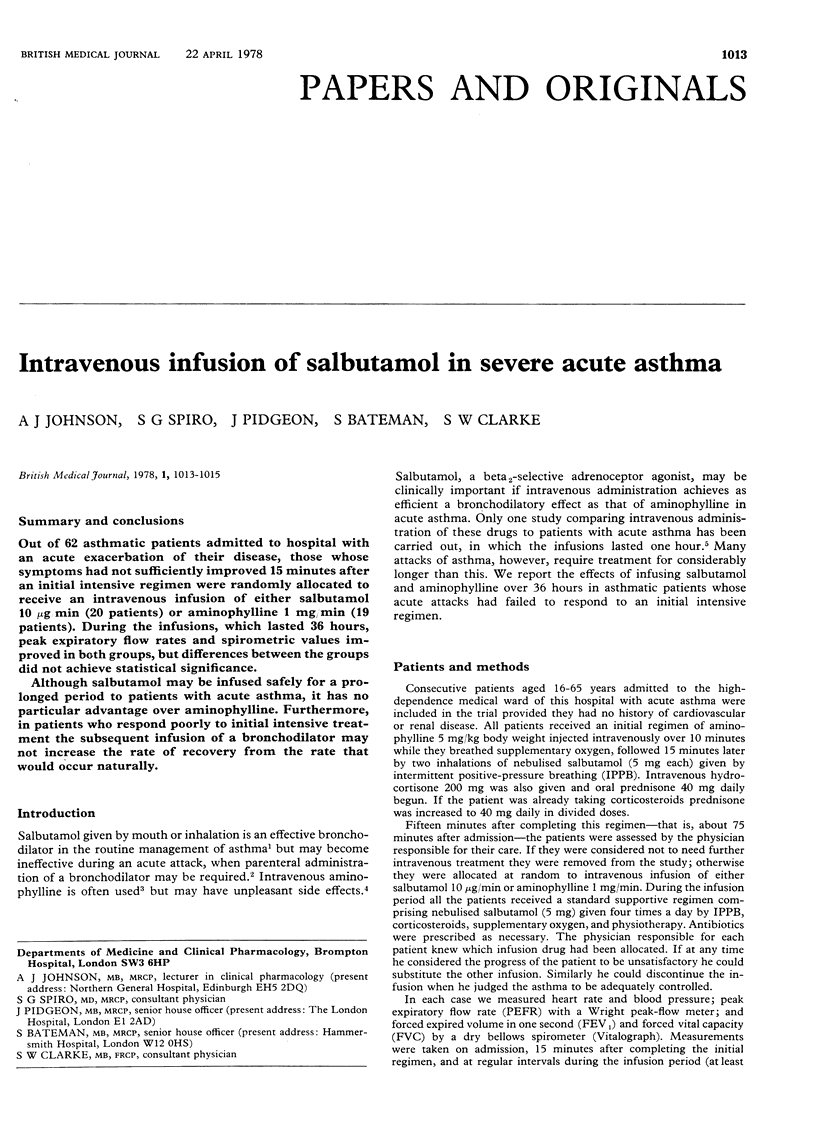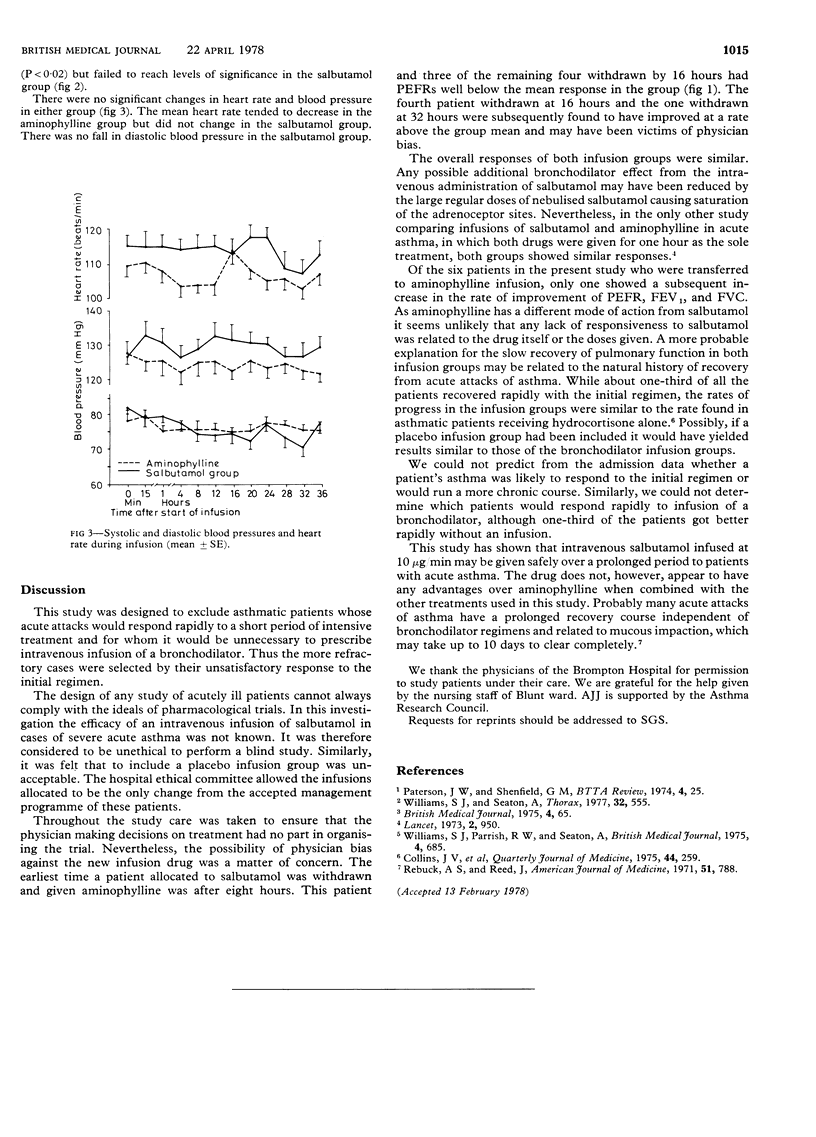Abstract
Out of 62 asthmatic patients admitted to hospital with an acute exacerbation of their disease, those whose symptoms had not sufficiently improved 15 minutes after an initial intensive regimen were randomly allocated to receive an intravenous infusion of either salbutamol 10 microgram/min (20 patients) or aminophylline 1 mg/min (19 patients). During the infusions, which lasted 36 hours, peak expiratory flow rates and spirometric values improved in both groups, but differences between the groups did not achieve statistical significance. Although salbutamol may be infused safely for a prolonged period to patients with acute asthma, it has no particular advantage over aminophylline. Furthermore, in patients who respond poorly to initial intensive treatment the subsequent infusion of a bronchodilator may not increase the rate of recovery from the rate that would occur naturally.
Full text
PDF


Selected References
These references are in PubMed. This may not be the complete list of references from this article.
- Rebuck A. S., Read J. Assessment and management of severe asthma. Am J Med. 1971 Dec;51(6):788–798. doi: 10.1016/0002-9343(71)90307-x. [DOI] [PubMed] [Google Scholar]
- Williams S. J., Parrish R. W., Seaton A. Comparison of intravenous aminophylline and salbutamol in severe asthma. Br Med J. 1975 Dec 20;4(5998):685–685. doi: 10.1136/bmj.4.5998.685. [DOI] [PMC free article] [PubMed] [Google Scholar]
- Williams S., Seaton A. Intravenous or inhaled salbutamol in severe acute asthma? Thorax. 1977 Oct;32(5):555–558. doi: 10.1136/thx.32.5.555. [DOI] [PMC free article] [PubMed] [Google Scholar]


